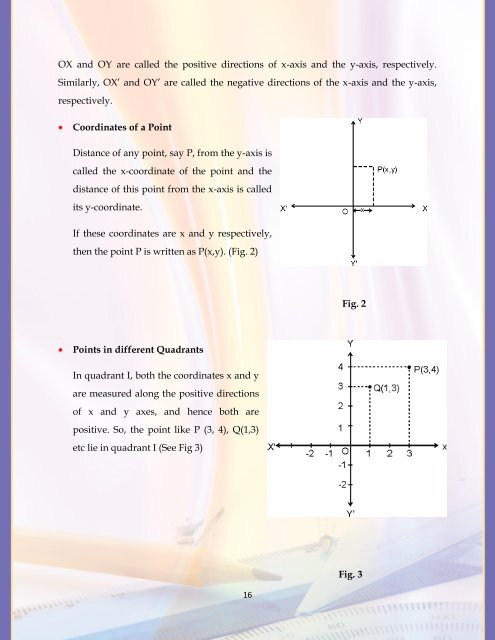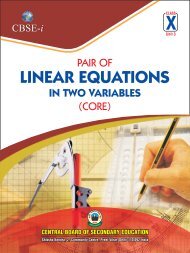CORE Coordinate Geometry and Transformations - New Indian ...
CORE Coordinate Geometry and Transformations - New Indian ...
CORE Coordinate Geometry and Transformations - New Indian ...
You also want an ePaper? Increase the reach of your titles
YUMPU automatically turns print PDFs into web optimized ePapers that Google loves.
OX <strong>and</strong> OY are called the positive directions of x-axis <strong>and</strong> the y-axis, respectively.<br />
Similarly, OX‟ <strong>and</strong> OY‟ are called the negative directions of the x-axis <strong>and</strong> the y-axis,<br />
respectively.<br />
<strong>Coordinate</strong>s of a Point<br />
Distance of any point, say P, from the y-axis is<br />
called the x-coordinate of the point <strong>and</strong> the<br />
distance of this point from the x-axis is called<br />
its y-coordinate.<br />
If these coordinates are x <strong>and</strong> y respectively,<br />
then the point P is written as P(x,y). (Fig. 2)<br />
Fig. 2<br />
Points in different Quadrants<br />
In quadrant I, both the coordinates x <strong>and</strong> y<br />
are measured along the positive directions<br />
of x <strong>and</strong> y axes, <strong>and</strong> hence both are<br />
positive. So, the point like P (3, 4), Q(1,3)<br />
etc lie in quadrant I (See Fig 3)<br />
16<br />
Fig. 3

















